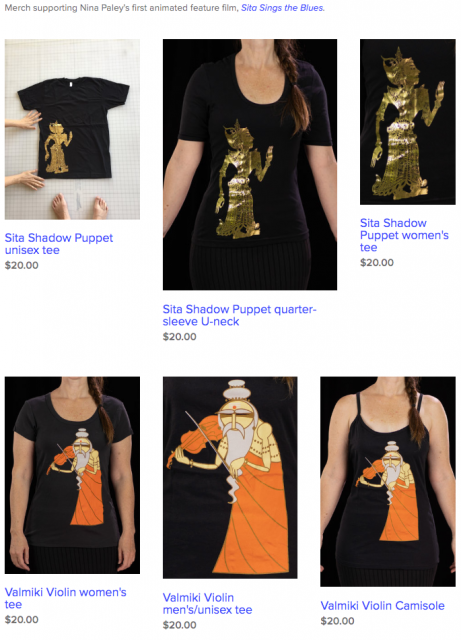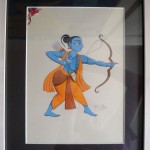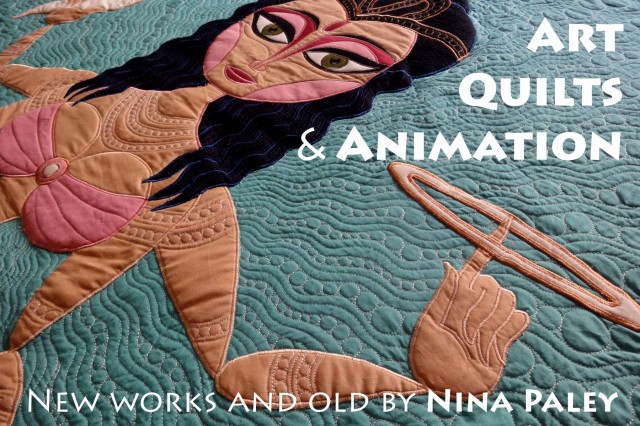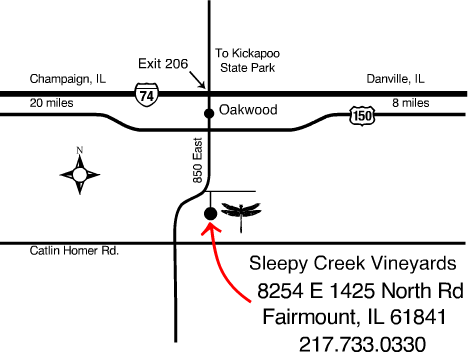
I am hereby changing Sita Sings the Blues‘ CC-BY-SA (Share Alike) license to CC-0.
A few years ago I started thinking about taking a vow of non-violence: a commitment to never sue anyone over Knowledge (or Culture, Cultural Works, Art, Intellectual Pooperty, whatever you call it). Copyright law is hopelessly broken; indeed, the Law in the US is broken all over the place. Why would I resort to the same broken law to try to fix abuses that occur within it?
We live in a messed-up world. My choices, however principled, will not change that. People will continue to censor, suppress, and enclose Knowledge. Share-Alike – the legal requirement to keep Knowledge Free – has ironically resulted in the suppression of same.
“Not using knowledge is an offense to it,” wrote Jeff Jarvis, reflecting on the death of Aaron Swartz.
I learned of Aaron’s death on Sunday; on Monday, the National Film Board of Canada told me I had to fill out paperwork to “allow” filmmaker (and personal friend) Chris Landreth to refer to Sita Sings the Blues in his upcoming short, Subconscious Password, even though Fair Use already freed the NFB from any legitimate fear of Share-Alike’s viral properties. I make compromises to my principles every day, but that Monday I just couldn’t. The idiocy of NFB’s lawyers was part of the same idiocy that Aaron fought in liberating documents from JSTOR. I couldn’t bear to enable more bad lawyers, more bad decisions, more copyright bullshit, by doing unpaid paperwork for a corrupt and stupid system. I just couldn’t.
So the NFB told Chris to remove all references to SSTB from his film.
There are consequences for taking a principled stance. People criticize you, fear you, and pity you. You get plenty of public condemnation. You lose money. Sometimes the law goes after you, and although that hasn’t happened to me yet, it could as I do more civil disobedience in the future.
But the real victim of my principled stance isn’t me, it’s my work. When I took a principled stance against Netflix’s DRM, the result was fewer people saw SSTB. When countless television stations asked for the “rights” to SSTB and I told them they already had them, the result was they didn’t broadcast it. When publishers wanted to make a SSTB-based book, the Share-Alike license was a dealbreaker, so there are no SSTB books.
My punishment for opposing enclosure, restrictions, censorship, all the abuses of copyright, is that my work gets it.
Not using knowledge is an offense to it.
So, to the NFB, to Netflix, to all you publishers and broadcasters, to you legions of fucking lawyers: Sita Sings the Blues is now in the Public Domain. You have no excuse for suppressing it now.
Am I still fighting? Yes. BUT NOT WITH THE LAW. I still believe in all the reasons for BY-SA, but the reality is I would never, ever sue anyone over SSTB or any cultural work. I will still publicly condemn abuses like enclosure and willful misattribution, but why point a loaded gun at everyone when I’d never fire it? CC-0 is an acknowledgement I’ll never go legal on anyone, no matter how abusive and evil they are.
CC-0 is as close as I can come to a public vow of legal nonviolence. The law is an ass I just don’t want to ride.

I cannot abolish evil. The Law cannot abolish evil; indeed, it perpetuates and expands it. People will continue to censor, silence, threaten, and abuse Knowledge, and our broken disaster of a copyright regime will continue encouraging that. But in fighting monsters, I do not wish myself to become a monster, nor feed the monster I’m fighting.
Neither CC-BY-SA nor CC-0 will fix our flawed world with its terribly broken copyright regime. What I can say is SSTB has been under CC-BY-SA for the last 4 years, so I know what that’s like and can share results of that experiment. Going forward under CC-0 I will learn new things and have more results to share. That seems like a win even if some bad scenarios come into play. I honestly have not been able to determine which Free license is “better,” and switching to CC-0 may help answer that question.























